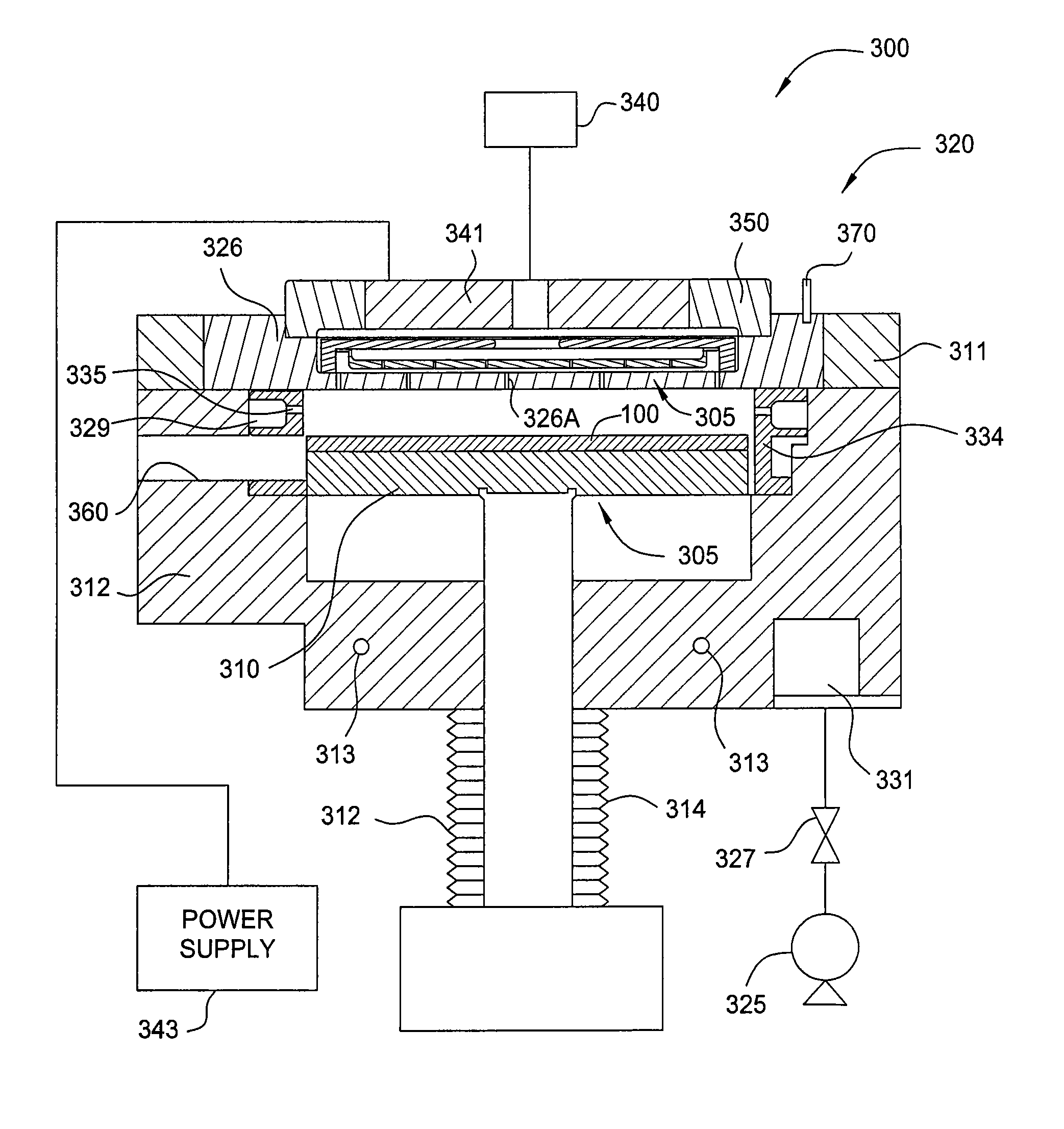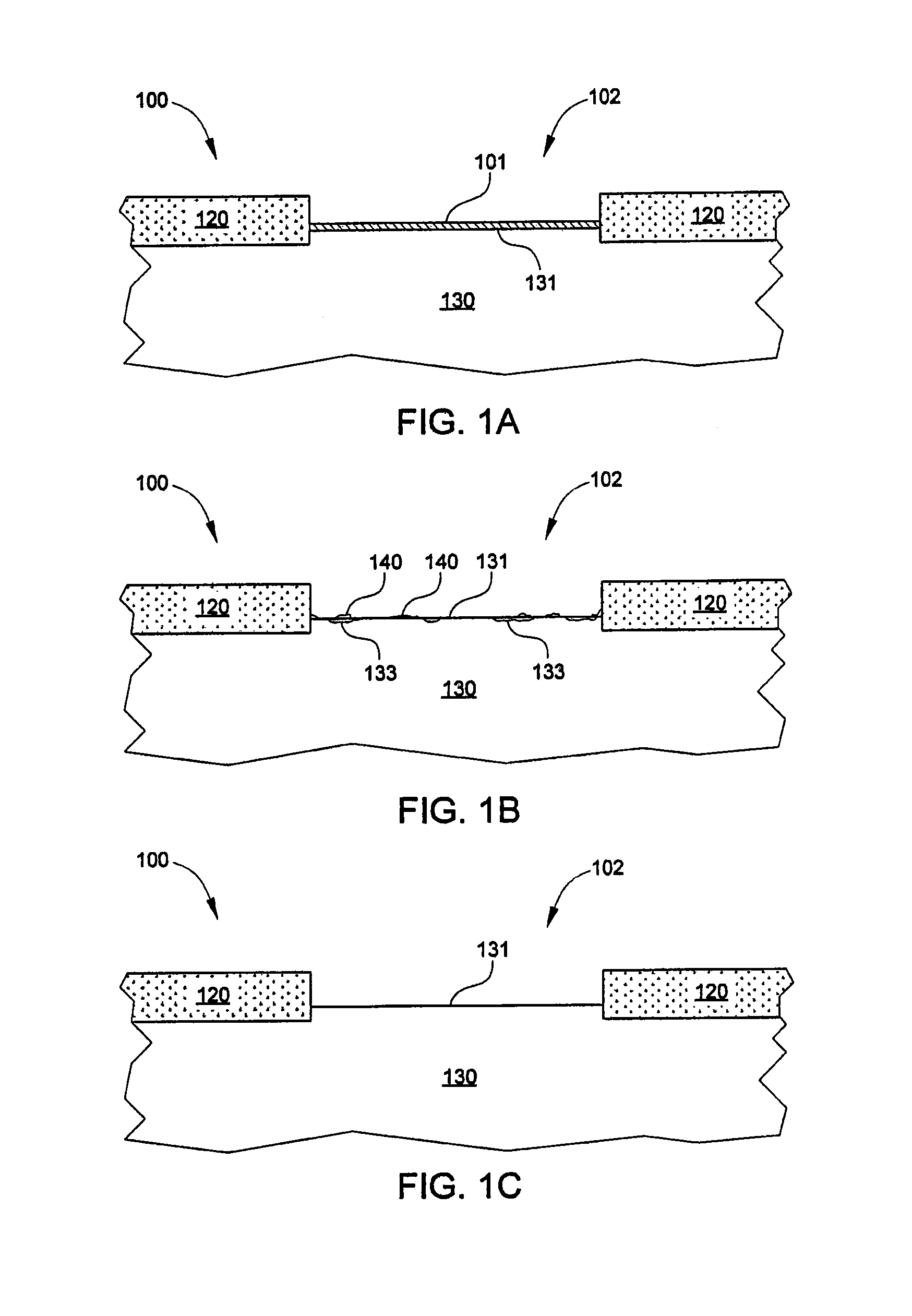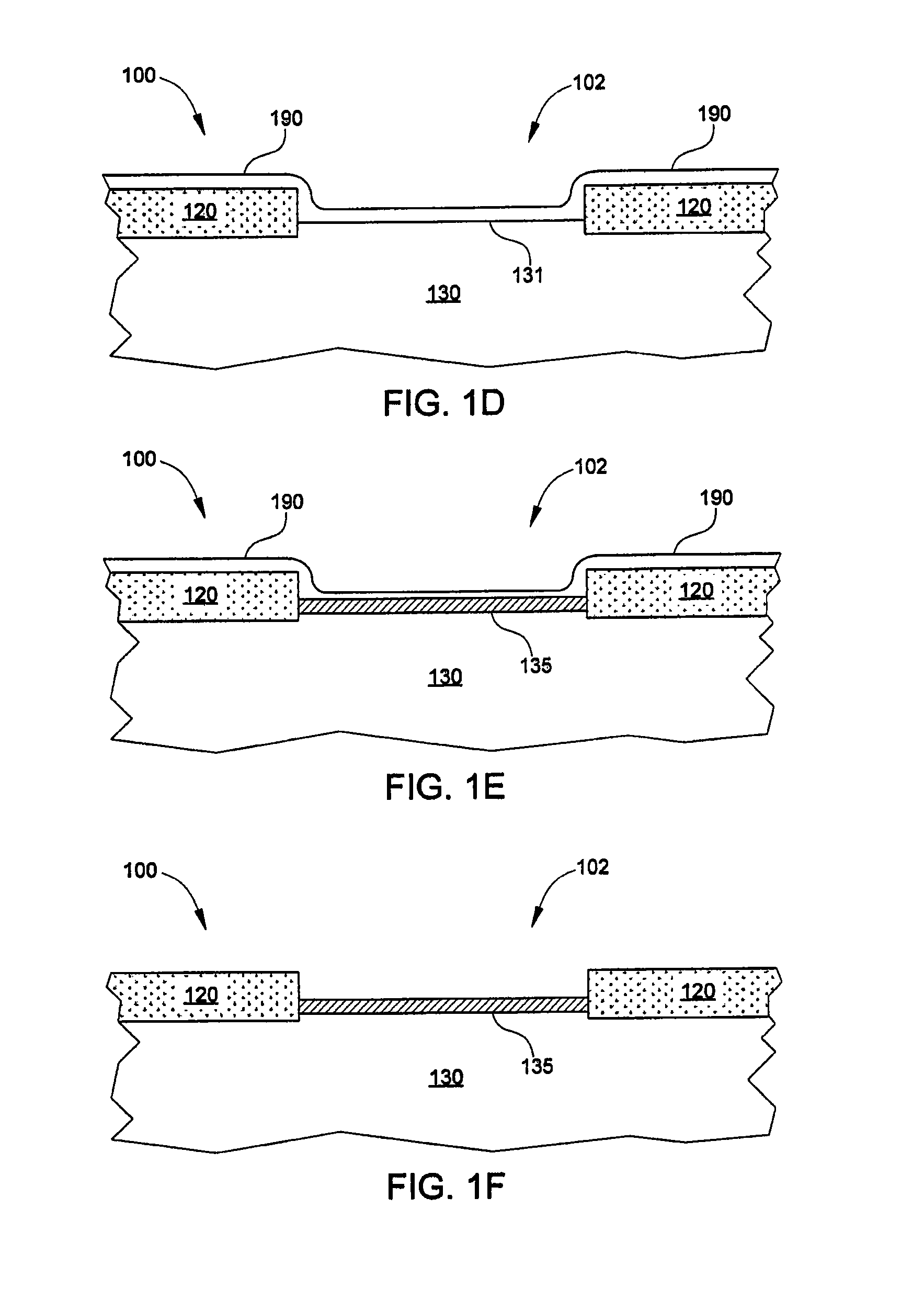Method for removing native oxide and associated residue from a substrate
a technology of native oxide and associated residue, which is applied in the direction of electrical discharge tubes, basic electric elements, electrical apparatus, etc., can solve the problems of contamination of native oxide, difficulty in subsequent fabrication processes, and undesirable native oxide layers
- Summary
- Abstract
- Description
- Claims
- Application Information
AI Technical Summary
Benefits of technology
Problems solved by technology
Method used
Image
Examples
Embodiment Construction
[0018]FIGS. 1A-1F are schematic cross-sectional views of a substrate surface treated according to embodiments of the invention. Substrate 100 may be a 200 or 300 mm silicon wafer, or any other substrate used to fabricate microelectronic devices and the like. Substrate 100 includes a bulk region 130 that may be a silicon-containing underlayer or may be the actual underlying bulk portion of substrate 100. As shown in FIG. 1A, substrate 100 includes a nitride layer 120 with an opening 102 formed therein to expose a surface 131 of bulk region 130. Nitride layer 120 may comprise silicon nitride (Si3N4) and / or other durable masking materials, and is deposited on bulk region 130 to protect bulk region 130 during oxide deposition and other fabrication processes. A native oxide layer 101 is formed in opening 102 of nitride layer 120 due to the exposure of surface 131 of bulk region 130 to either atmosphere or to one or more fabrication processes that cause native oxide layer 101 to form, suc...
PUM
 Login to View More
Login to View More Abstract
Description
Claims
Application Information
 Login to View More
Login to View More - R&D
- Intellectual Property
- Life Sciences
- Materials
- Tech Scout
- Unparalleled Data Quality
- Higher Quality Content
- 60% Fewer Hallucinations
Browse by: Latest US Patents, China's latest patents, Technical Efficacy Thesaurus, Application Domain, Technology Topic, Popular Technical Reports.
© 2025 PatSnap. All rights reserved.Legal|Privacy policy|Modern Slavery Act Transparency Statement|Sitemap|About US| Contact US: help@patsnap.com



